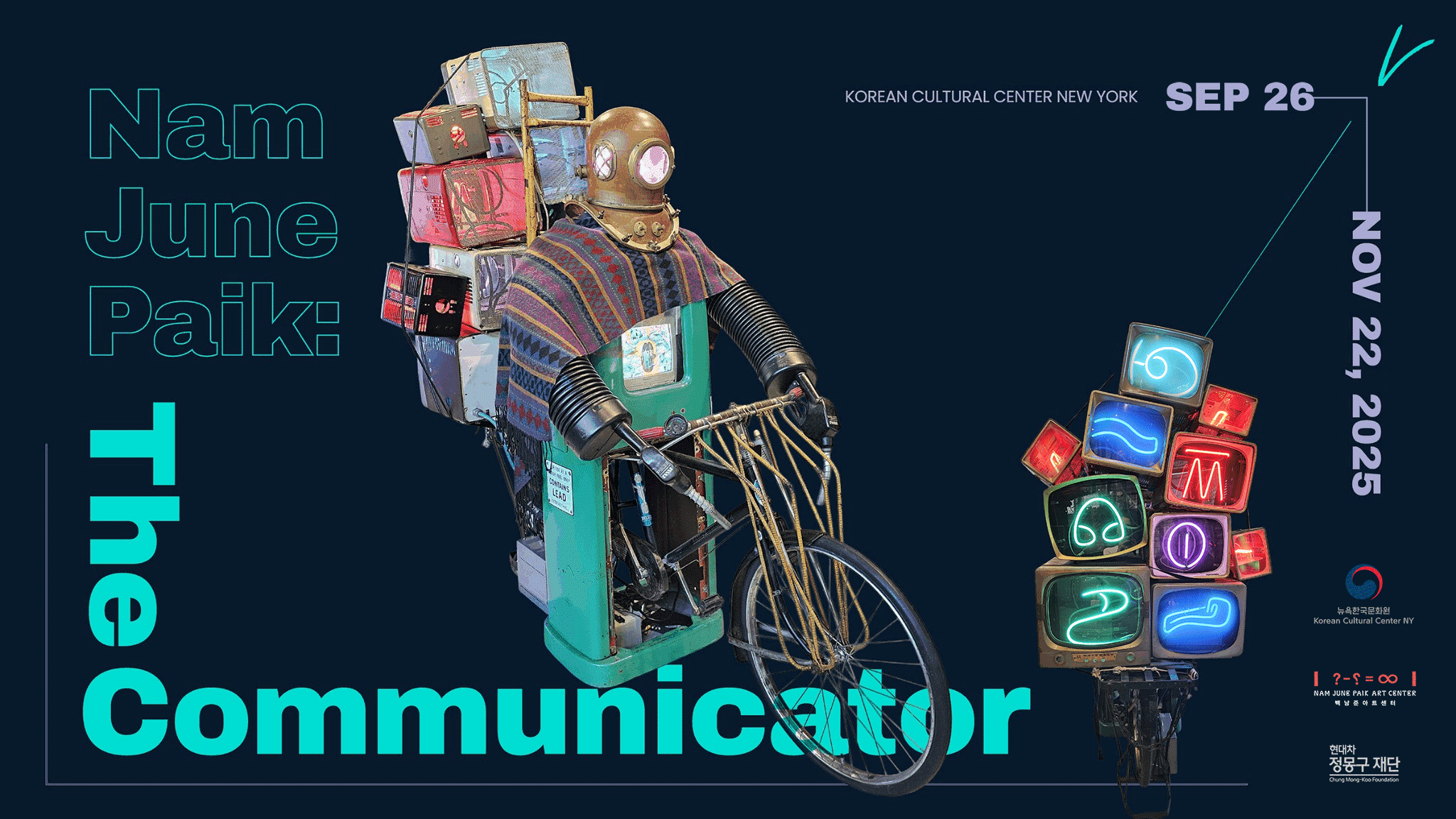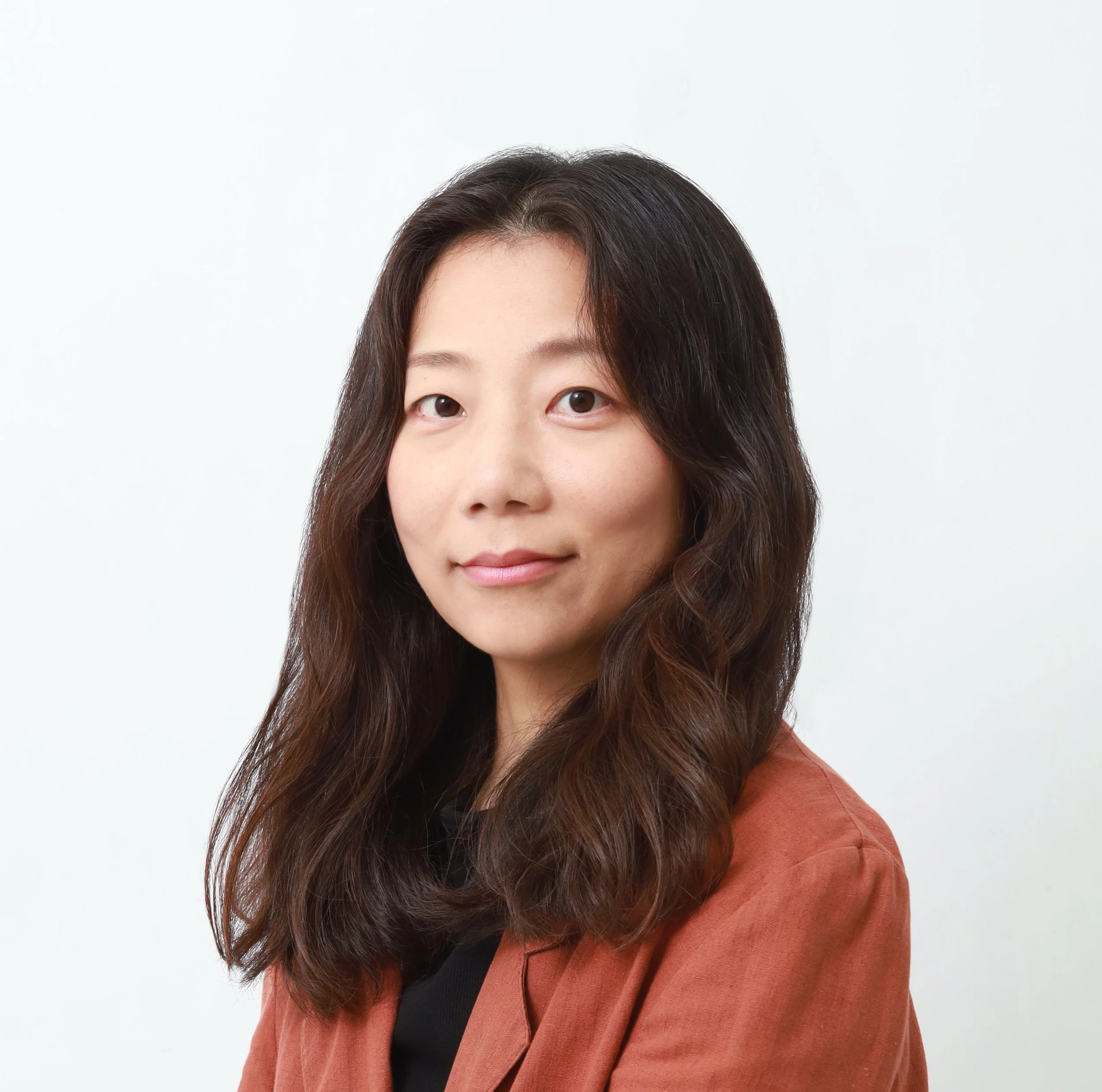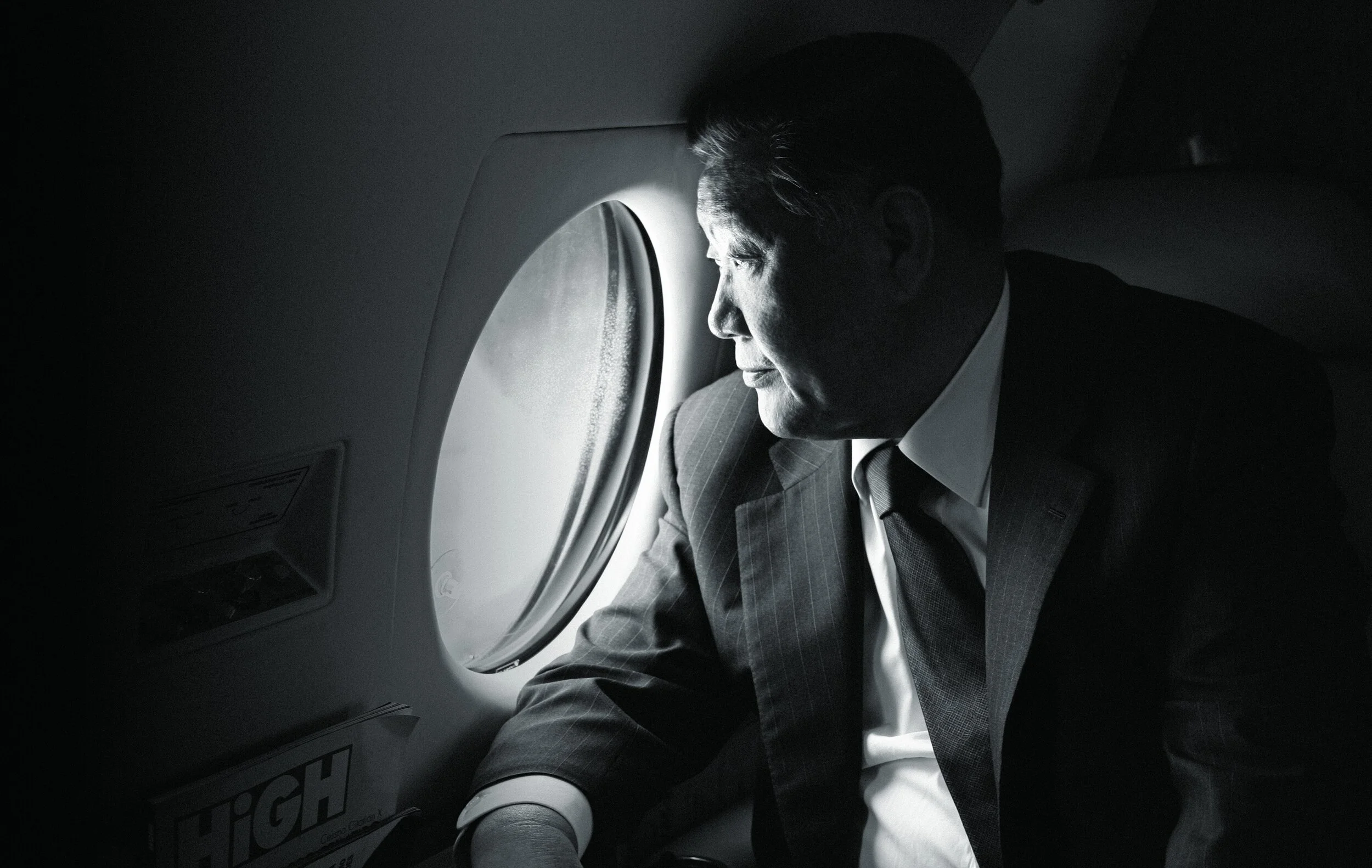Nam June Paik: The Communicator
On view: September 26 - November 22, 2025
Tuesday - Friday: 10 AM - 6 PM / Saturday: 11 AM - 5 PM
It is closed on Sunday and Monday.
Venue: Korean Cultural Center New York
122 E 32nd Street, New York, NY, 10016 (1st & 2nd Floors)
The Korean Cultural Center New York is honored to present Nam June Paik’s exhibition in commemoration of the 80th anniversary of Korea’s liberation, tracing how his pioneering practice helped shape the position and significance of Korean contemporary art on the global stage.
Paik, the founder of video art, was a visionary artist who bridged art and technology. Through technology, he sought to open new possibilities for connection—between individuals, across cultures, and through shared sensibilities.
This special exhibition features his iconic works, including his robot sculptures and TV Cello on loan from the Nam June Paik Art Center, as well as a monumental video installation composed of 65 television monitors, consigned by James Cohan Gallery.
By transforming TVs into instruments or human-like figures, he playfully dismantled and reimagined the boundaries between machine and human, art and everyday life, performance and play. His robots, built from stacked televisions, symbolized his belief that technology could extend human existence and inspire new ways of imagining the world.
Courtesy of Nam June Paik Art Center Ⓒ Estate of Peter Moore / VAGA, New York
Paik once declared, “It is the duty of the artist to think about the future. I am an artist, but I have no interest in conventional art. My interest lies in the entire world. For me, every day is a matter of communication.” As such, communication was his lifelong pursuit and the essence of art.
His works sought the liberation of the senses through technology, envisioning art freed from boundaries and limitations. In this light, his artistic philosophy resonates deeply with the idea of “liberation” today. If liberation is not only about recovering national sovereignty but also about freeing humanity from the confines of time, space, ideology, and thought, then Paik’s art becomes its living, contemporary embodiment.
This exhibition also highlights his enduring commitment to younger generations and to intergenerational dialogue in art. In the Atrium, Paik’s Rehabilitation of Genghis Khan (1993)—highlighted in the exhibition’s poster—is presented alongside The Car Toward the Future (2025) by emerging media artist Areum Kim, supported by the Hyundai Motor Chung Mong-Koo Foundation. Her work carries forward Paik’s vision of technology intertwined with humanity, love, and coexistence, demonstrating how his artistic spirit continues to thrive today while opening pathways toward the future.
Exhibition View
About the Artists
Courtesy of Nam June Paik Art Center Ⓒ Gianni Melotti
Nam June Paik
He was born in Seoul in 1932 and studied aesthetics at the University of Tokyo, writing his thesis on the music of Arnold Schoenberg. In 1956, he moved to Germany, where he immersed himself in philosophy and contemporary music while working closely with avant-garde artists who challenged artistic conventions.
In 1963, Paik presented his first solo exhibition, Exposition of Music – Electronic Television, which transformed televisions into works of art and marked the beginning of his lifelong exploration of media. After relocating to the United States in 1964, he developed a groundbreaking body of work that included large-scale installations, performances, and the invention of the video synthesizer.
From the 1980s onward, Paik realized global satellite projects such as Good Morning, Mr. Orwell (1984), breaking down barriers between avant-garde art and popular culture. In 1993, he represented Germany at the Venice Biennale, where his work on the theme of the artist as nomad was awarded the Golden Lion.
Even after a stroke in the mid-1990s, Paik continued to work until his passing in Miami in 2006. His legacy endures as that of a visionary who expanded the role of art to imagine the future and to foster global communication through technology.
Areum Kim
Born in Seoul in 1987, she studied Fine Art at the Korea National University of Arts. As a media and visual artist, she explores technology, memory, and the possibilities of coexistence between human and non-human beings. She was awarded the Grand Prize at ONSO ARTIST OPEN CALL 2025, organized by Hyundai Motor Chung Mong-Koo Foundation. Her work has been presented at major galleries and biennales in Korea. Kim often draws from everyday media and digital culture, reimagining them as poetic narratives of connection, love, and shared futures.
For this exhibition, Kim presents The Car Toward the Future (2025), a multimedia work inspired by Nam June Paik’s Rehabilitation of Genghis Khan. In her piece, the car becomes a symbolic vessel journeying across past, present, and future, navigating a sea of undersea cables that represent the global internet. Guided by themes of love and coexistence, the work imagines technology not as an end in itself but as a pathway toward a more compassionate and interconnected world.
About the Collaborating Institutions
Nam June Paik Art Center
Opened to the public in 2008, Nam June Paik Art Center aspires to revive the generosity, criticality and interdisciplinarity characteristic of both Paik’s work and life. As christened by the artist himself, Nam June Paik Art Center aims to be a museum where Paik lives on. It is not just to remain a memorial for the artist, but to seek an active undertaking to increase the awareness of Paik’s work and life far and wide. As a public museum specializing in media art, Nam June Paik Art Center also devotes itself to cultivating artistic and scholarly experiments in creative and critical ways.
Hyundai Motor Chung Mong-Koo Foundation
The Hyundai Motor Chung Mong-Koo Foundation has been actively involved in a wide range of social contribution activities, guided by its founder’s philosophy of contributing to the country and society through business activities. In particular, the Foundation has been committed to nurturing future leaders in line with the founder’s vision.
The Foundation selects outstanding talent from South Korea and ASEAN countries by supporting their studies and research, empowering them to work toward realizing their dreams. We encourage young entrepreneurs to tackle social challenges with innovative solutions, and we also support emerging artists in helping bring K-culture to the global stage.












